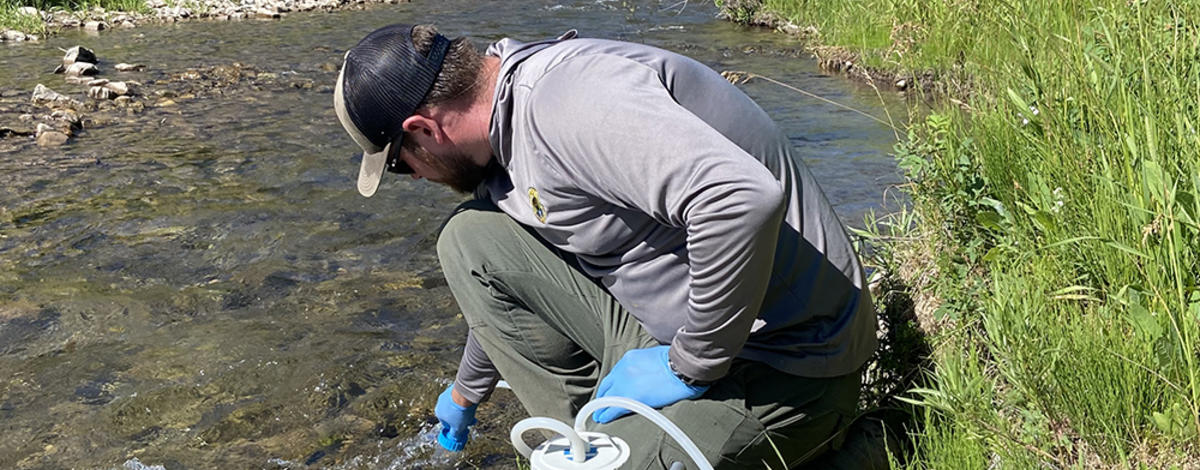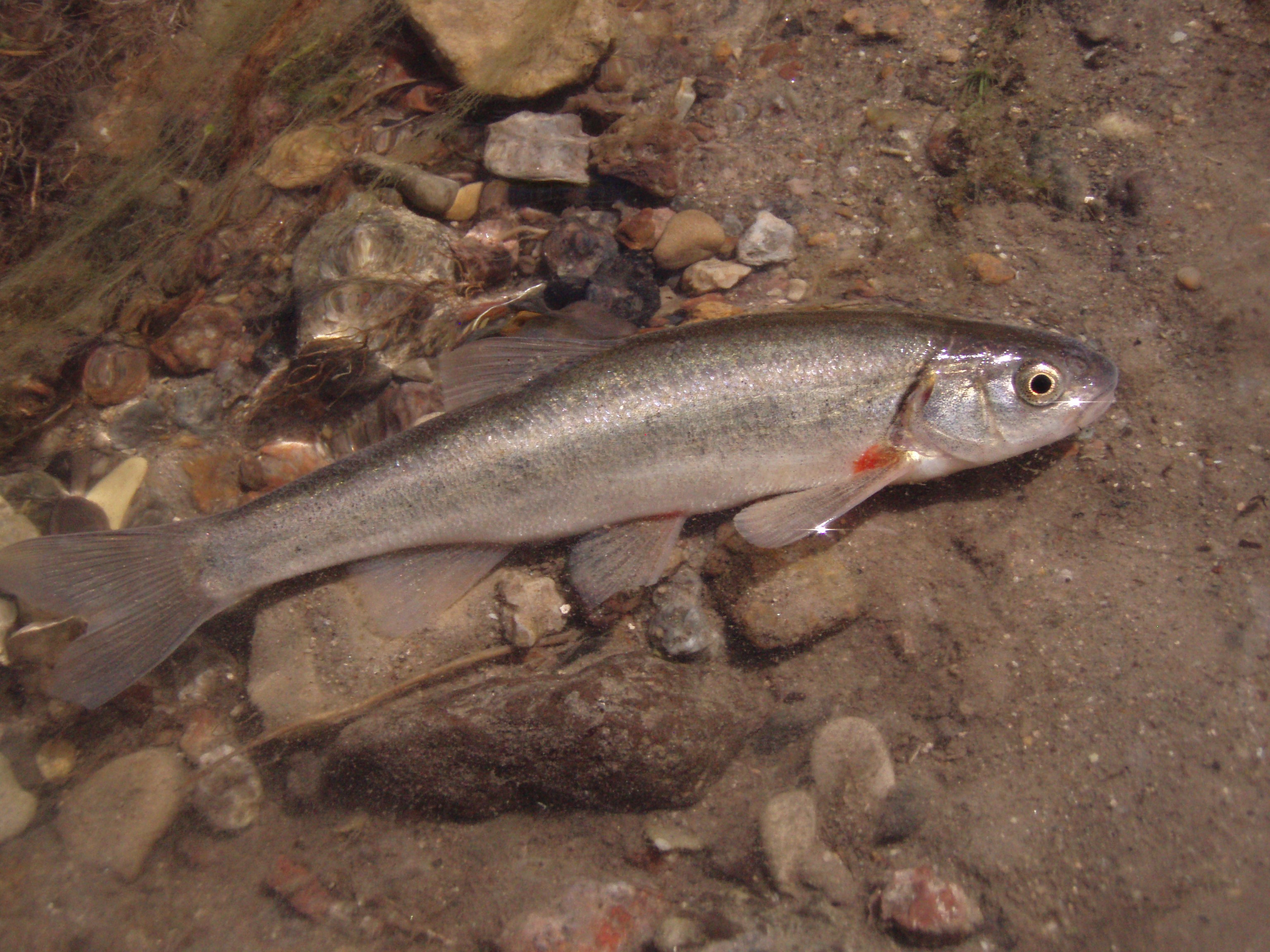If you look over IDFG news releases and blogs you can get a pretty good idea of the tools we use to survey Idaho’s fish populations. We often use traps, nets, electrofishing, and anglers to collect information used to make management decisions. But this field season, we’ve partnered with the U.S. Forest Service Rocky Mountain Research Station (RMRS) to sample with a new tool, known as Environmental DNA (eDNA).

Looking for fish particles? A different tool for finding rare native fishes in Idaho.

The basics of eDNA are as follows. When fish, or other aquatic organisms, are swimming around, they shed cells off their body which contain genetic material. These cells remain in the water for a while and drift downstream. Fish and Game collects these cells by pumping stream water through a collection filter using a small battery-powered pump. Filters are then sent to the RMRS lab for processing. The lab lets us know if genetic material from the fish species we’re looking for was detected on the filter, and therefore in the sampled location. DNA may be detected for a long way, even exceeding half a mile.

eDNA has been used for many species across the country during the past few years. In Idaho, it’s been used to document locations of Bull Trout and Brook Trout, but this time IDFG was interested in using eDNA to detect a couple of our harder to find and lesser known species, the Green Sucker and Northern Leatherside Chub. Both these species are found in Southeast Idaho but because they are not present or abundant in many of these drainages, we’ve had a hard time learning much about where they do and don’t live in these drainages. Another complicating factor is that these fish look similar to some of our other non-game native fishes, so it can be hard to identify them just based on their looks alone. eDNA helps improve our ability to identify species that look very similar and provides a quick and effective method for detecting rare species when traditional sampling tools have limitations. We can sample hundreds of miles of stream in a matter of weeks with eDNA, where it would have taken years with traditional methods.

This summer Fish and Game has gone out and taken hundreds of water samples across Southeast Idaho to help us document locations of Green Sucker and Northern Leatherside Chub. This information will greatly expand our understanding of where these species are, what habitats they use, and inform future status assessments to help conserve these populations. Idaho’s non-game native fish are often overlooked compared to gamefish species such as trout, but these fish are extremely important components of our native fish communities and tracking the health of their populations is key to sustaining all native fish.
